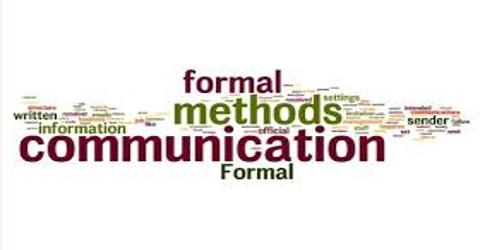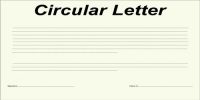Advantages of Formal Communication
Formal communication occurs when information flows by following the officially prescribed rules and regulations. It is regarded as the officially recognized channel of communication. Most of the communication in organizations is done formally. Organizations can enjoy the following advantages from this communication:
- Increasing attention:
Formal communication follows prescribed rules and regulations. In this communication, the sender transmits the message consciously. The receiver also receives the message and conveys his response to the sender with due care. This type of communication is used by following the predetermined rules so it increases the overall efficiency of the organization. In this way, this communication system increases the attention of both the sender and receiver.
- Use as reference:
Formal communication is the officially recognized communication channel. The copy of this communication system is always preserved in the file and it is used as a reference. Therefore, the messages of this communication are kept for permanent records and can be used as a reference if needed in the future. As a result, it is easy to seek a copy of it if necessary.
- Reliability:
Since formal communication follows officially recognized rules & regulations, its messages are more reliable and dependable. This communication is more credible and more reliable for sending important issues like objectives, orders, and directions, etc.
- Free from distortion:
Formal communication occurs in conformity with the established rules and regulations. Since this communication has well-defined rules and regulations. Hence, there is little chance of distorting and imitating the message. So, there is a little chance of mistakes in exchanging information within the employees.
- Maintaining discipline:
Formal communication helps to maintain discipline in the organization. Under this communication system, the workers are bound to be careful about their own duty. This pattern of communication follows the authority structure of the organization. Therefore, discipline can be maintained easily. So ultimately it makes discipline in the organization.
- Ease of coordination:
Coordination is a basic management function. Successful completion of organizational activities largely depends on coordinated efforts. The top-level management communicates with its employees by using the formal downward communication system. Again the employees communicate with their higher authority to use this system. Formal communication makes the job of coordination easy.
- Ease of delegating authority:
Formal communication follows the formal structure of the organization. Authority is delegated by the superiors to the subordinates through the help of this communication. Therefore, it helps the superiors to delegate authority to their subordinates.
- Easy to understand:
The rules and regulations of formal communication are clearly – depicted in the organization. This communication moves through a pre-determined channel and therefore everyone is aware of where and how to send the message. This provides necessary guidance about how, when, with whom, and where to communicate. So, it does not face any problem to flow.
- Increasing the company’s goodwill:
Communication with external parties through various formal channels like an annual report, press conferences, news releases, etc. helps to create better relationships and to increase the company’s goodwill. Such Communication increase the overall efficiency of the management as organizational rules and procedures are required to be followed always.
Form the above discussion we can conclude that the success of an organization primarily depends on this communication. If formal communication is not given due importance, an organization is unlikely to succeed.














